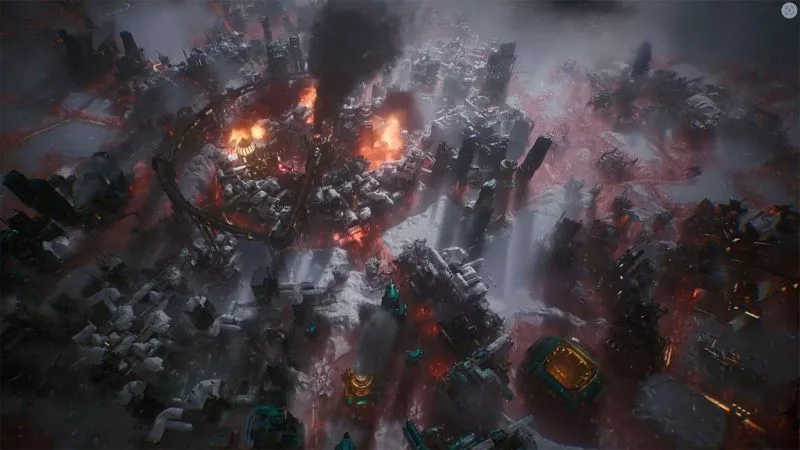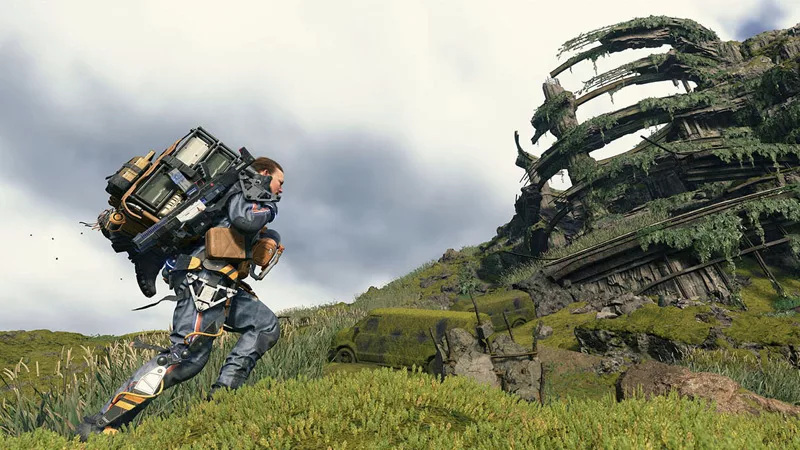A conversation with Raf Rennie, ROG Flow Z13-ACRNM RMT02’s graphic designer
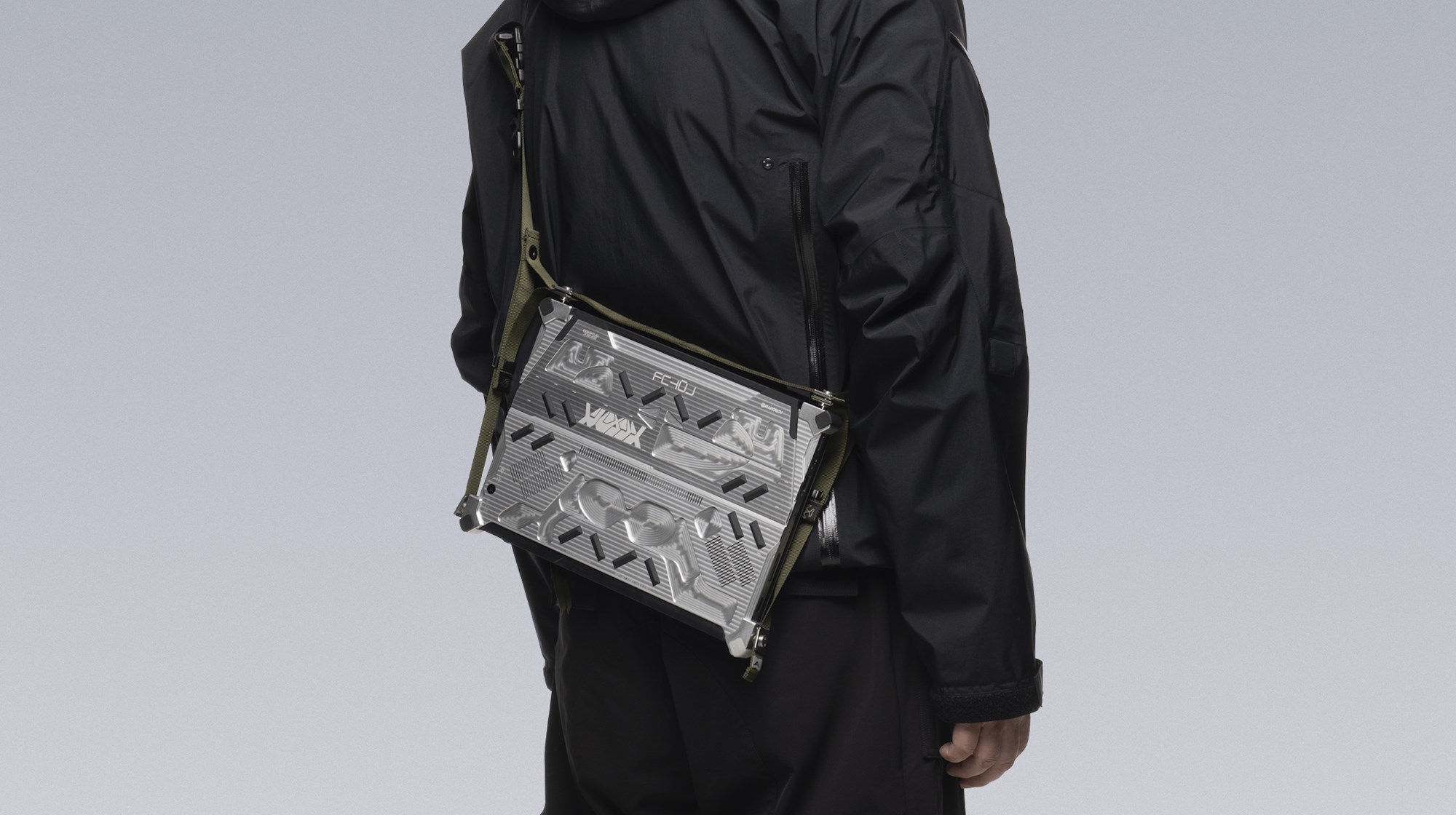
The ROG Flow Z13-ACRNM RMT02 is a bold take on the future of tablet computing, and ROG’s second collaboration with renowned design firm ACRONYM. I had the pleasure of sitting down for a conversation with Raf Rennie, an independent graphic designer based in Toronto who worked with ROG and ACRONYM to create this one-of-a-kind machine. We discussed his influences, some of the design challenges, and dove deep into the meaning of the symbols that adorn the Flow Z13 RMT02.
Truth to material
One of the most striking features of the RMT02 is its bare aluminum chassis. Rennie explained that “truth to material” was a core design concept for the project from the very beginning, and that Rod Chong, project lead from Acronym for RMT02, works with cars frequently. While brainstorming ideas, Rod showed the team custom hubcaps from a car he was working on, in an unfinished state, with the milling pattern clearly visible. The team loved the factory prototype look and the utilitarian feel of the bare metal and decided to incorporate that same style for the Flow Z13-ACRNM RMT02, a machine designed to be used on live sets and in the field for production work.
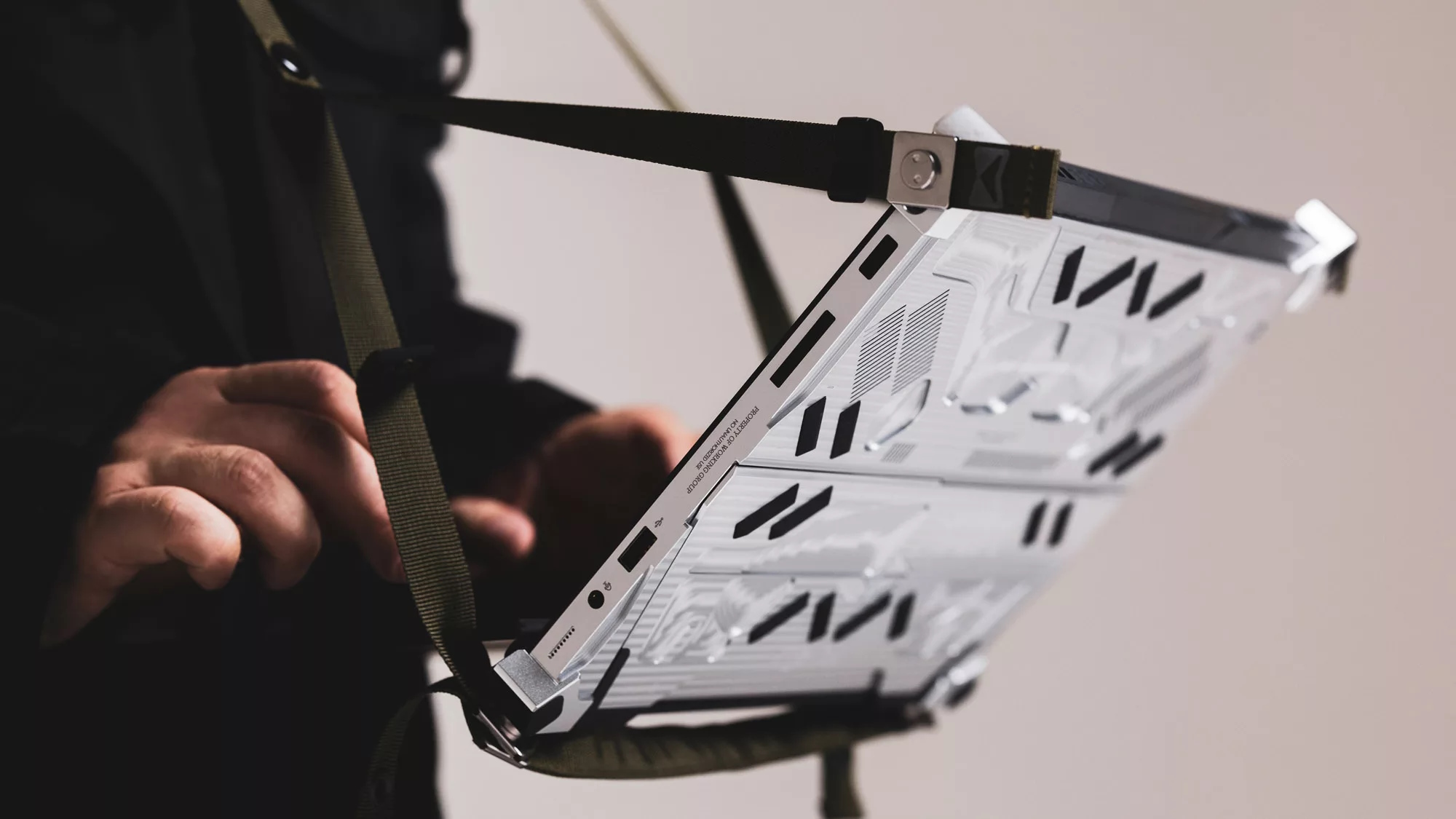
RMT02’s chassis isn’t just bare metal. Laborious CNC-milled patterns give the machine a luxurious and slightly alien appearance. Rennie drew inspiration for these forms from Japanese designer and sculpture Takenobo Igayashi. In the 1960’s, Igayashi experimented with 3D sculptures of metal and milling techniques, with some models showing clear and visible steps down, which create depth and sharp edges. Once Rennie and the ACRONYM team had settled on the bare metal design, this idea of using CNC and milling techniques to achieve the designs they wanted came naturally, with the added function of reducing excess weight from the machine.
Though you wouldn’t know it from looking at the polished final product, this was the first time Rennie worked with metal. “This was a lot of experimenting, putting ideas out there,” he says. “Huge respect to Phil Saunders, an industrial designer who did the legwork.” Phil worked on the early 3D models of the chassis, the bumpers, and the kickstand, all defining features that set RMT02 apart from the crowd.
The creation of beauty
The first thing you’ll see as you unbox the RMT02 is the solid aluminum backplate. The rubber bumpers offer visual contrast against the metal chassis, but my eye was immediately drawn to the intricate CNC milled shapes across both halves of machine. When pressed, Rennie admitted that the top section I mistook for a face was actually drawn from his longstanding love of sci-fi. “My mother made me a Star Trek t-shirt in like grade 3 or 4, and I would wear it to school all the time,” Rennie says. “Star Trek has always been a part of my life, and I’ve always loved the bridge, when they say ‘Screen on’ and you look out into space.” The milling continues on the bottom half of the backplate, with an incomplete representation of a sonar system for additional tracking of the rogue machines by the Working Group.
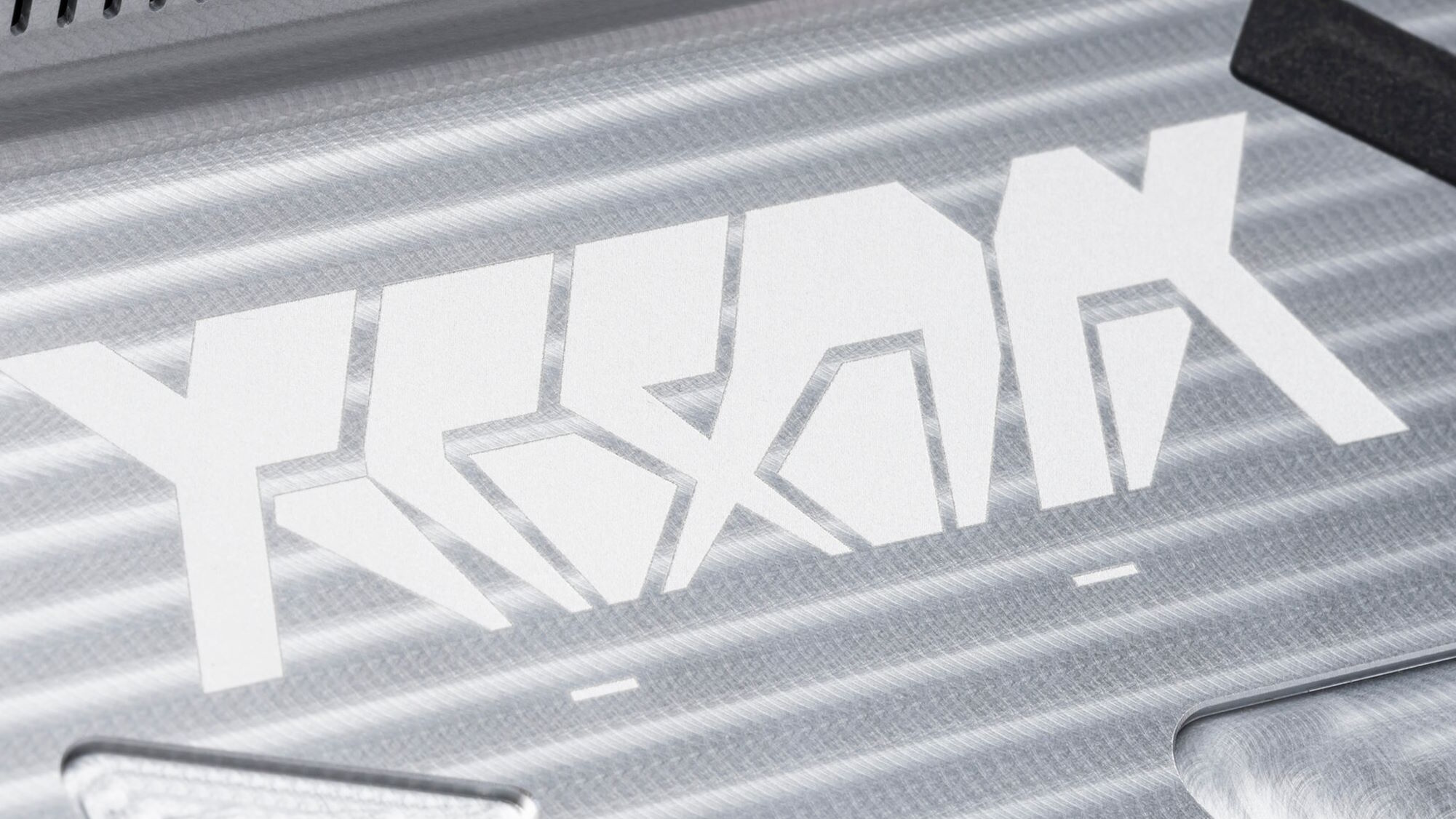
Laser-etching graces this surface as well, with a prominent stylized logo for “ACRNM” standing out in stark contrast against the clean lines and typefaces elsewhere on the device. Rennie drew from the bold and energetic Deku from My Hero Academia for this logo, inspired by the character’s drive to reach for new heights, no matter how impossible. Rennie wanted to make sure that there was a symbol with punch and impact to balance out the symmetry and utilitarian design on the rest of the chassis.
Rennie also created a brand new typeface for this project, inspired by the earlier works of designer Wim Cromwell in the 1960s. Cromwell was working at the dawn of computing, best known for his use of strict grids. As computers became more and more common, Cromwell wanted to create a typeface that was easier for them to read, so he eliminated all curves, as well as hexagonal and diagonal lines, resulting in a font with only right angles. Drawing on the idea that RMT02 is built as a machine for the future, Rennie modified Cromwell’s original typeface for RMT02, representing the communion of man and machine and exploring how language and computers will evolve even more into the future.
This wasn’t always the plan for the backplate. Originally, the team intended to stay utilitarian and industrial, with a cross-ridged structure similar to a non-slip steel surface that you would see in an auto repair shop or a fire escape. Early in the project, Rennie had a call with Errolson Hugh (co-founder of ACRONYM) and they both agreed that they wanted this machine to be a little more cryptic — even poetic. As a result, they moved further away from the harsh industrial design of the flooring texture. Rennie drew inspiration from a series of exhibits in the Art Gallery of Ontario in his home city of Toronto, with an entire room dedicated to Renaissance and medieval carvings. Some of the objects in the exhibit had incredibly intricate and beautiful scenes, painstakingly created, onto seemingly innocuous everyday objects like a comb or a drinking glass. “I wanted to create a computer with the same beauty, love, and aesthetic for no other reason than to make it beautiful,” Rennie says.
What does it all mean?
When actually holding the Flow Z13 RMT02, you notice how different it feels from traditional laptops and tablets. Rennie and the team made extensive use of laser etching under the kickstand to print the device’s specs on the bottom alongside an array of symbols, which impart a rough tactile feeling under the fingers.
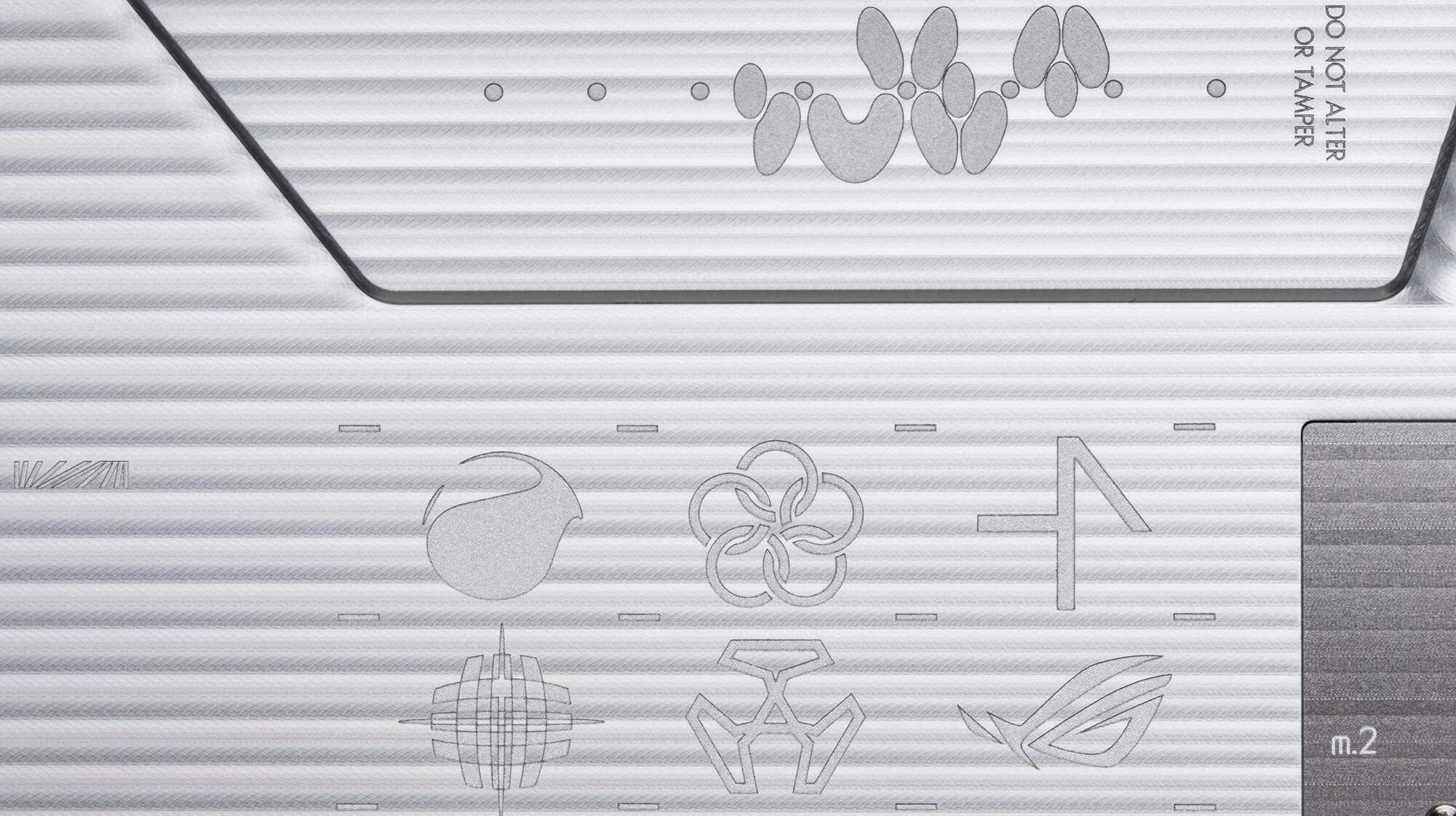
This machine was created for members of the Working Group, shorthand for ACRONYM, their collaborators, and fans of the brand. The central motif, a long bar prominently featured above the spec table, was inspired by a radar system, which became the mission patch for the project. On the power supply, this image appears again with the term “Immediate Vision.” Inspired by Paul Virillio and his book Lost Dimension, this symbol echoes the concept of global, real-time communication and its psychological effect on humanity, Rennie explains. “Paul says that when everything becomes immediate, everything becomes artificial; your normal understanding of the world around you doesn’t relate to the way you see things online or on computers.” As a machine designed to be used in the field and carried with you all day, much like a cell phone, the RMT02 truly communicates this paradigm of immediate vision.
Creativity unbound
While the entire team workshopped to come up with general framework and color composition for the keyboard cover, the nuts and bolts of the keyboard design is all Rennie. He originally used a bolder, more vibrant color scheme for the keyboard, but eventually decided that a darker hue would be more appropriate. The original design was, however, released in very limited fashion as a special "Friends and Family" version of the RMT02.
Artistic flourishes like the “silence,” “before,“ and “now” text on the media keys appear all over the keyboard. I asked Rennie specifically about why the Z-key was renamed to “past,” and he explained that since this machine was intended for creators, who live and die by the Ctrl+Z “Undo” shortcut, he thought it was natural to associate it with a past state of being. Finally, the leather keyboard cover's shape was derived from bits and pieces of the entire design — a circle here, an oblong there. It should be familiar to members of the Working Group, as it also appeared in the real world for an AR companion game designed by ACRONYM during the product’s launch.
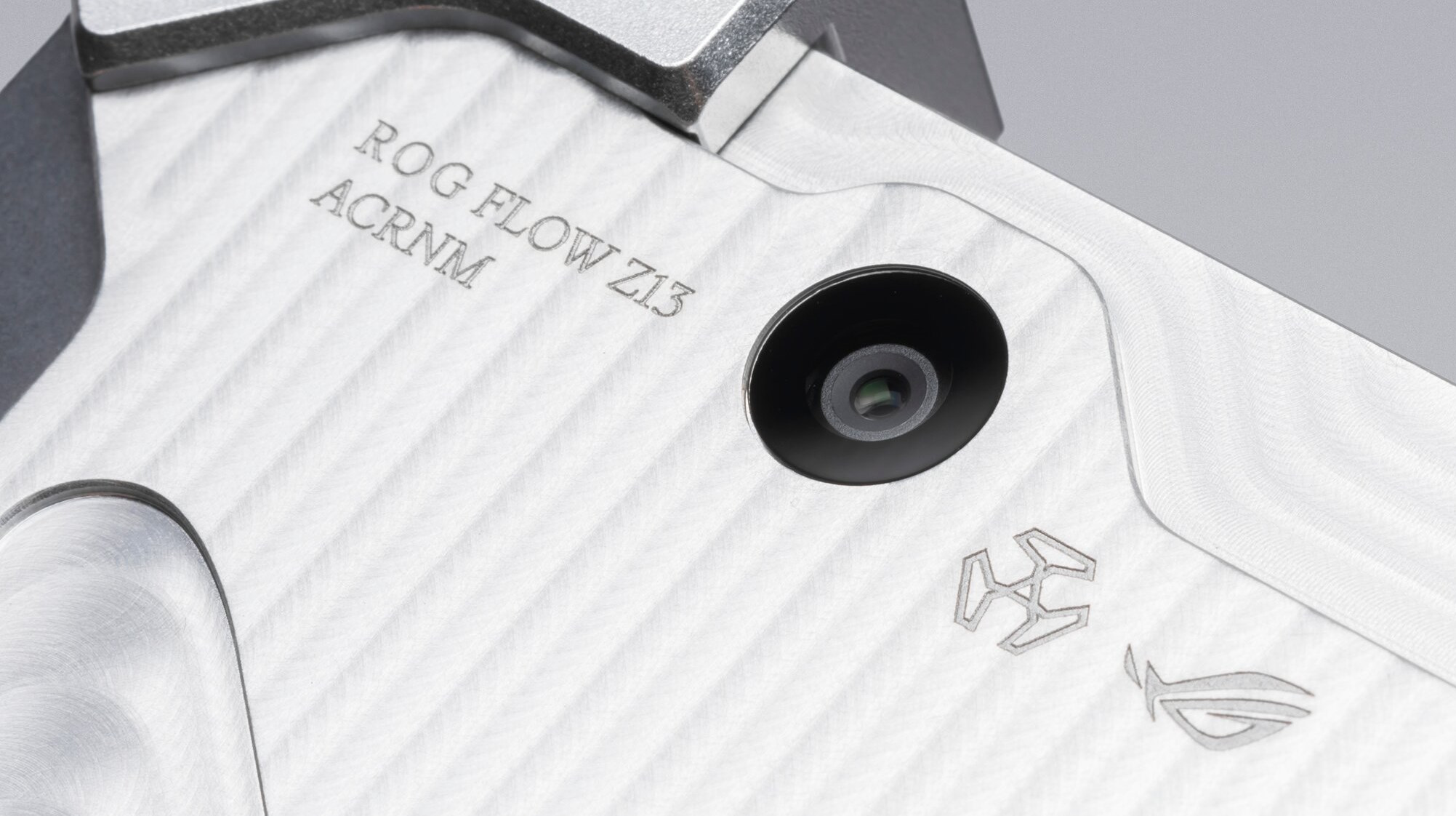
Some ideas didn’t make it to the final version of RMT02, like the metal pattern on the bare aluminum, or a bold neon enclosure for an XG Mobile, but Rennie felt like he and the team accomplished what they set out to with this project. “The openness of The Republic of Gamers to take such a risk on this machine, that we thought looked pretty wild, was amazing,” Rennie says. “And we got to do everything we wanted.”
I want to sincerely thank Raf Rennie for taking the time to talk with me about the RMT02 partnership from his perspective. I certainly have a deeper appreciation for the craftsmanship and attention to detail on this truly unique machine sitting on my desk.
